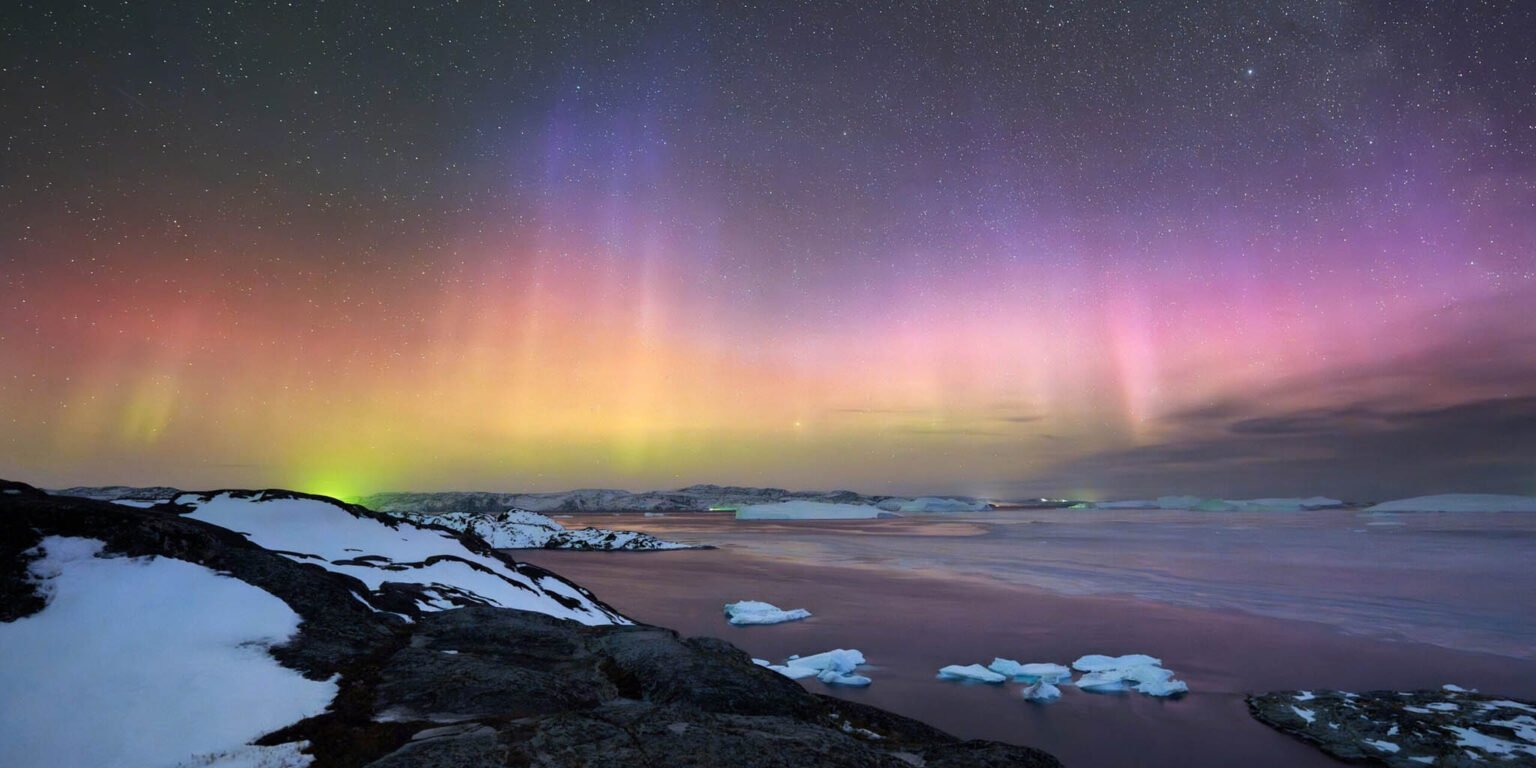Photo Tour Overview
Stay on remote rarely visited islands and visit small Inuit communities travelling by boat, plane, and dog sled into the frozen west of beautiful Greenland.
All Greenland photography tours encompass a range of photographic genres, including landscape, astrophotography, Aurora, travel and cultural photography.
Tours are scheduled at different times of the year to ensure all participants a unique experience and numerous photographic opportunities.
Latest Tours
Photo Tour Category
Aurora/Astro/Landscape Tour
You will learn:
Multiple fieldwork techniques tailored to current skill level.
Beginner to advanced structured nightscape workflows, landscape photography and Northern Lights photography.
Advanced Aurora planning and forecasting.
Post-production (PS/LR/Siril/Plugins/PTGui/LRT Timelapse.
These tours specialise in capturing the Aurora and can be heavily landscape orientated depending on the weather. Astrophotography is also taught on clear nights waiting for the Northern Lights).
Why our tours are different
Our Greenland photography workshops typically occur in September, October, and March. Each month offers unique photographic experiences, and a diversity of light and weather conditions.
Participants will journey to some of the most remote and photogenic locations on the Greenlandic west coast. One such area boasts only eight available rooms and a population of just 29. The itinerary includes several internal flights and boat trips.
Highlights of the tour include the Disko Bay area, the Icefjord, and the town of Ilulissat, all providing spectacular opportunities to photograph magnificent icebergs.
About Greenland
Travel to one of the most remote, and photogenic places in the world and experience the breathtaking scenery of the Greenland coast in all its splendour. Greenland is the world’s largest island, and is renowned for its stunning natural beauty and vast, unspoiled wilderness. Dominated by an expansive ice sheet, it features dramatic landscapes of towering glaciers, rugged mountains, and serene fjords. The island’s small, scattered population lives mainly along the coast, where colourful villages dot the stark, icy terrain.
Greenland is a paradise for astrophotographers, offering pristine dark skies with minimal light pollution, making it ideal for capturing the celestial wonders. The long winter nights provide extended hours for stargazing and photographing the breathtaking Northern Lights. Its remote, dramatic landscapes, including icebergs, glaciers, and fjords, serve as stunning foregrounds for night sky compositions. The clear, cold atmosphere reduces distortion, ensuring sharp and vivid images. For those seeking unparalleled astrophotographic opportunities, Greenland’s unique combination of natural beauty and atmospheric clarity is unmatched.

Reasons why Greenland is great for astrophotography
Dark Skies: Greenland is sparsely populated, resulting in minimal light pollution. This makes the skies exceptionally dark, ideal for capturing the night sky.
Northern Lights: The Aurora Borealis, or Northern Lights, are frequently visible in Greenland, especially during the winter months. These vibrant displays of natural light provide stunning subjects for astrophotography.
Clear Atmosphere: Greenland’s remote location and cold, dry climate contribute to a clear atmosphere with minimal dust and humidity, enhancing the clarity and sharpness of astrophotographic images. The cold temperatures reduce thermal turbulence in the atmosphere, leading to steadier air and better image quality for astrophotography.
Long Nights: During the winter months, Greenland experiences long periods of darkness, providing extended opportunities for night sky photography.
Stunning Landscapes: The dramatic landscapes, including icebergs, glaciers, and fjords, create breathtaking foregrounds that complement celestial subjects, adding depth and context to astrophotographs.
Unique Features: Greenland offers unique locations like ice caves, frozen lakes, and remote tundra, which can add distinctive elements to astrophotography compositions.
Accessibility to Remote Areas: Our expert guides are highly experienced and dedicated to making the best of these conditions and getting you safely to many remote places. The guide will plan a very flexible itinerary, often organising much of the trip on the fly to chase the best conditions and auroras. This way, the group gets the best chance to be in the right place at the right time.
